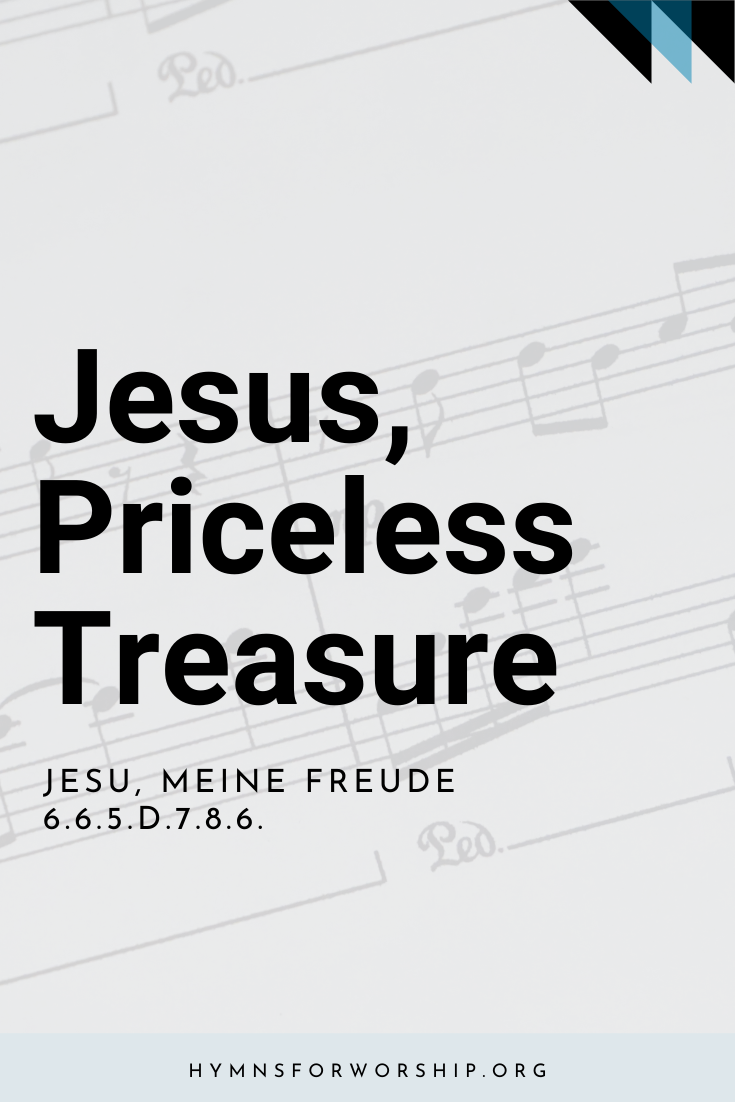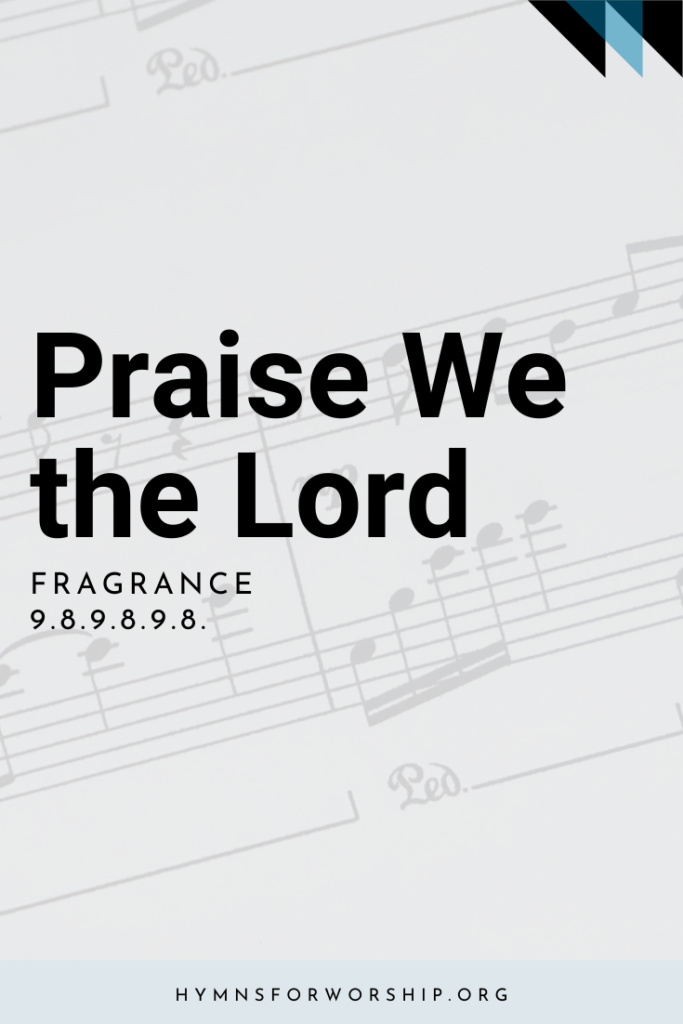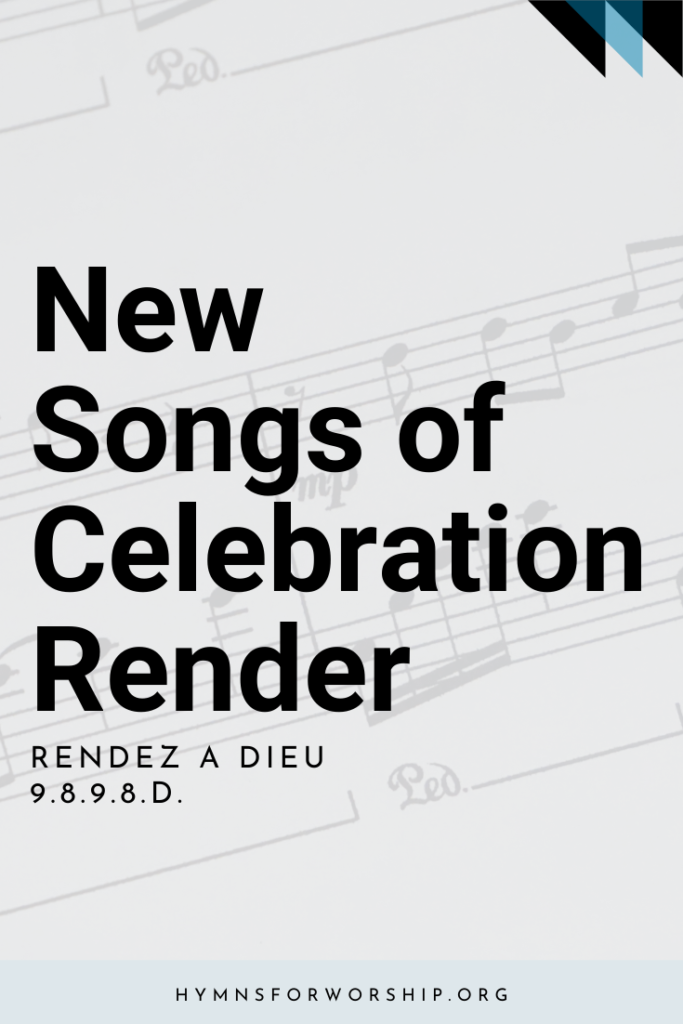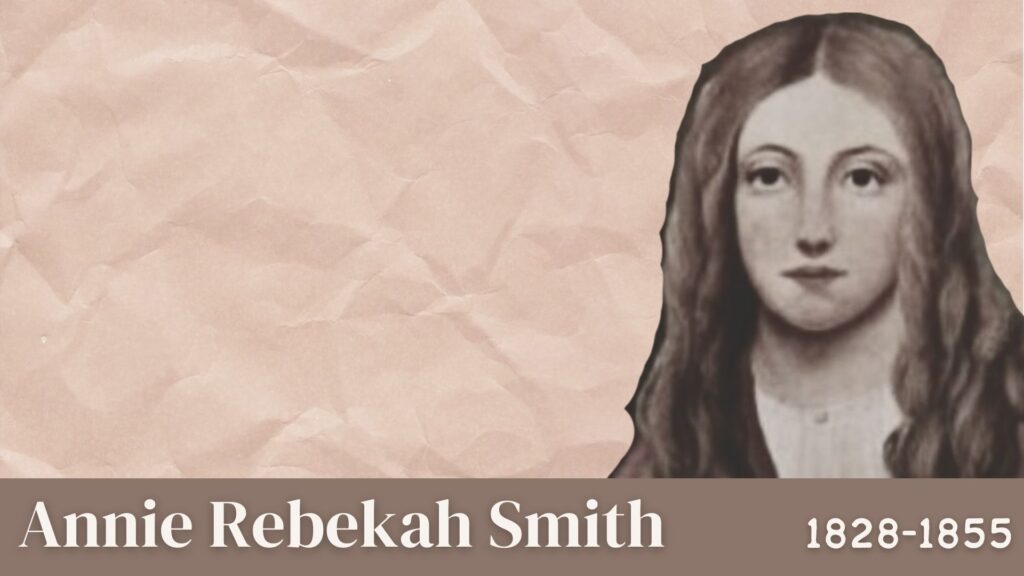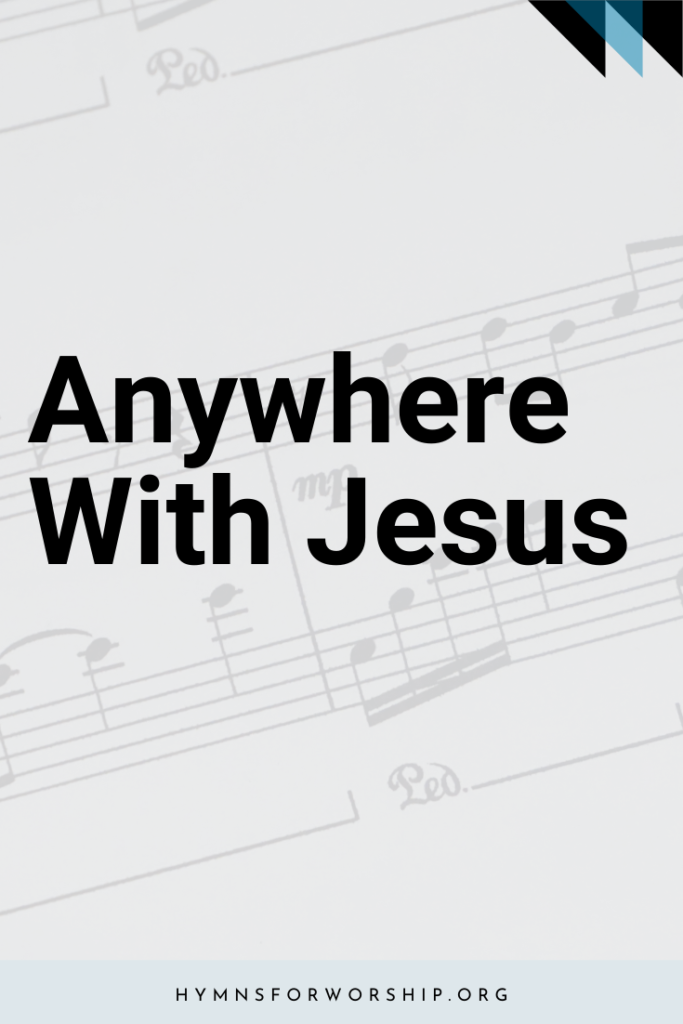JESUS CHRIST >> GLORY & PRAISE
SDAH 239
Jesus, priceless Treasure, Source of purest pleasure, Truest Friend to me:
Ah! how long I’ve panted, And my heart has fainted, thirsting, Lord, for Thee.


Text
1
Jesus, priceless Treasure, Source of purest pleasure, Truest Friend to me:
Ah! how long I’ve panted, And my heart has fainted, thirsting, Lord, for Thee.
Thine I am, O spotless Lamb, I will suffer naught to hide Thee,
Nought I ask beside Thee.
2
In Thine arms I rest me; foes who would molest me Cannot reach me here.
Though the earth be shaking, Every heart be quaking, Jesus calms our fear.
Sin and hell in conflict fell, With their bitter storms assail me,
Jesus will not fail me.
3
Hence, all thought of sadness! For the Lord of gladness, Jesus, enters in.
Those who love the Father, Though the storms may gather, still have peace within;
Yea, whatever we here must bear, Still in Thee lies purest pleasure,
Jesus, priceless Treasure!

Hymn Info
Biblical Reference
(a) Matt 13:46; Ps 42:2 (b) Deut 33:27, Ps 46:2 (c) John 16:33
Author
Johann Franck (1618-1677)
Translator
Catherine Winkworth, 1863 (1827-1878)
Hymn Tune
JESU MEINE FREUDE
Metrical Number
6.6.5.D.7.8.6.
Composer
Meloy by Johann Cruger (1598-1662)
Arranged
Johann S. Bach (1685-1750)
Theme
GLORY AND PRAISE
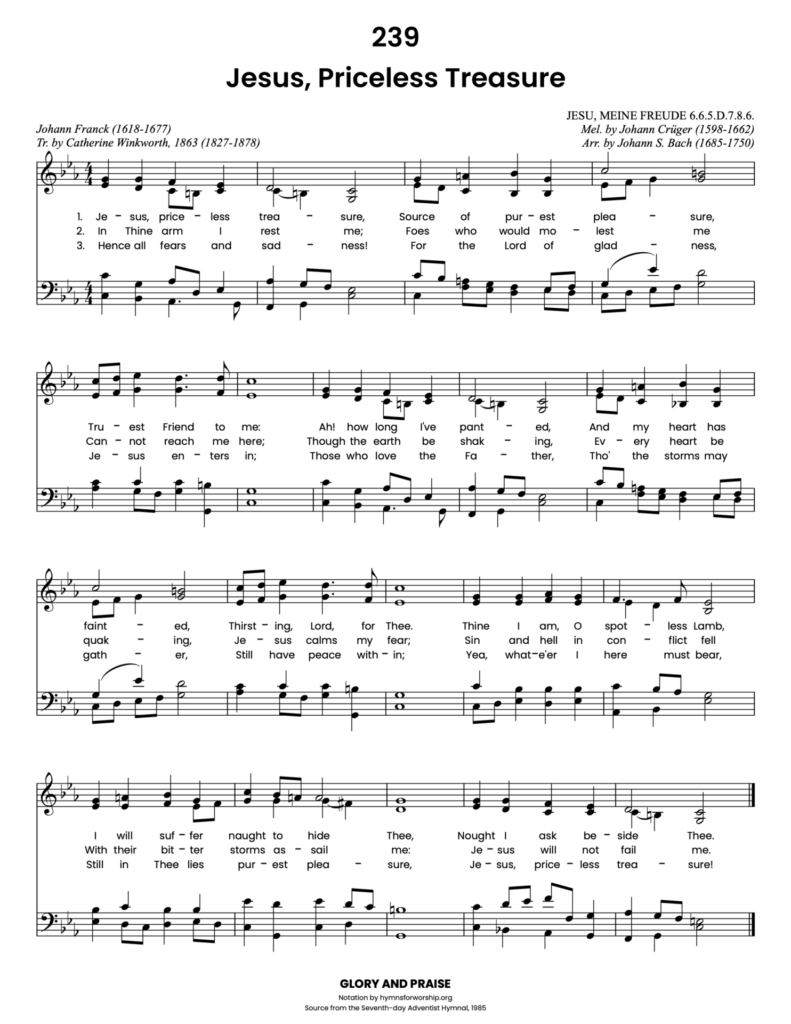
Get the hymn sheet in other keys here
Recommended Reading
The general idea when it comes to hymns is that there is a close bond between the author and the composer. That the author writes a hymn and the composer invents a tune to suit it, and then provides the harmony to accompany the tune. However, such wasn’t always the case.
Many hymns actually worked vice versa wherein authors would write verses according to existing tunes. Hundreds of hymns are sung from borrowed tunes, such as secular songs, chants, and even classical works. That being said, I went ahead and researched which hymns in the SDA Hymnal were originally classical works.
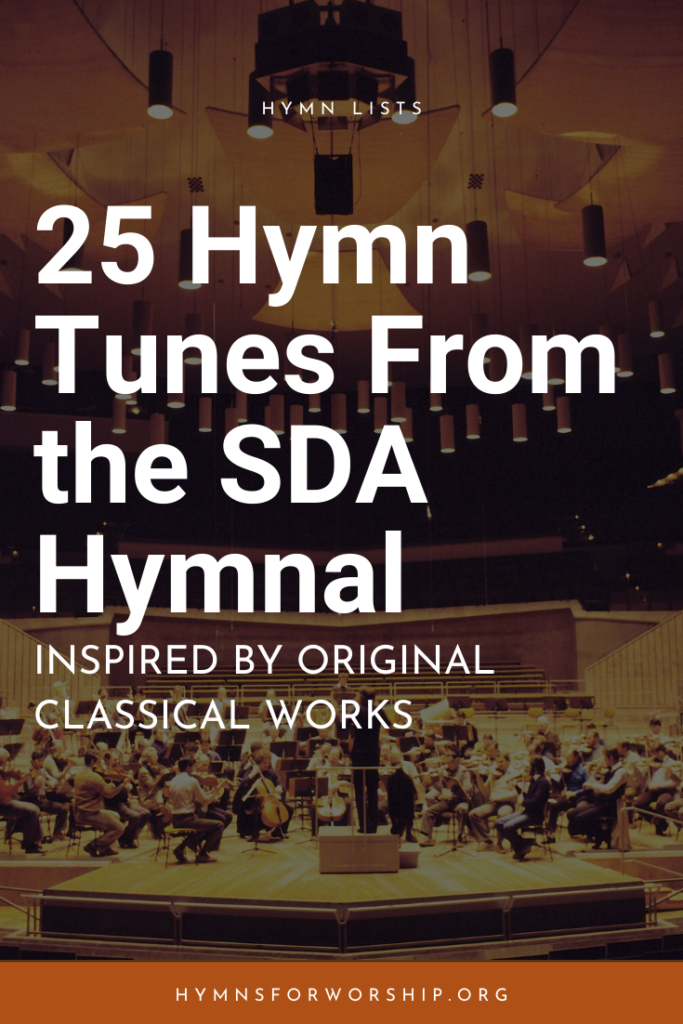
Notes
Make each hymn more meaningful with these helpful tools: Short, ready-to-use hymn introductions for church bulletins, multiple ways to introduce a hymn based on your worship theme and in-depth history and insights to enrich your song service.

